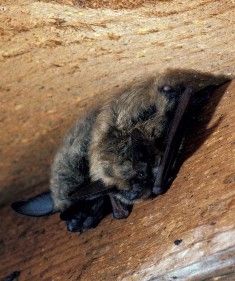 (CNS): The Cayman Islands is fortunate enough to have a diverse and interesting bat population. Of the nine species, the Grand Cayman Brown Bat is considered to be an endemic (locally unique) subspecies. Bats are the islands only native mammals, and even though they are of vital importance to a balanced ecology performing many crucial functions, they are not protected in any way. As a result, the National Trust does its best to protect the flying animals and is offering to help home owners safely remove bats from their roofs.
(CNS): The Cayman Islands is fortunate enough to have a diverse and interesting bat population. Of the nine species, the Grand Cayman Brown Bat is considered to be an endemic (locally unique) subspecies. Bats are the islands only native mammals, and even though they are of vital importance to a balanced ecology performing many crucial functions, they are not protected in any way. As a result, the National Trust does its best to protect the flying animals and is offering to help home owners safely remove bats from their roofs.
The national trust says that misinformation still abounds about bats, and although some have little mousy tails and most are small and brown, they are actually more closely related to monkeys than to mice. Bats are mammals in the family Chiroptera, which means "hand-wing". Their single pups are slow to mature and demand much maternal care and attention. Interestingly, an adult bat can live up to 30 years of age. There are over 1,200 species of bats world-wide and they are as different from each other as lions are from house cats.
Bats in the Cayman Islands carry no diseases and rabies is not found here. They are not interested in tangling in your hair and they are not vampires. In fact, there are no vampire bats in the Cayman Islands. While some Caribbean islands do have a bat known as a "vampire", this tiny creature is mainly a pest to cattle ranchers.
“We understand that some people are afraid of bats and we want to help calm their fears.” stated Lois Blumenthal, coordinator of the Caribbean Bat Conservation Project for Bat Conservation International and Director of the Bat Conservation Program for the National Trust. “Bats are not dangerous and do not pose a health threat, but they should still be removed from roof spaces to avoid odour problems.”
To find out if you have bats living in your building, stand outside just after sunset, but while the sky is still light, and watch. It is important that if you do see bats flying out, not to plug the hole because this may trap bats inside, forcing them into the living areas. Bats can be sealed out by using simple methods.
Roof-dwelling bats are helpful to humans in many ways, including the control of mosquitoes, beetles, moths and many crop and garden pests. Bats living in roof spaces are always insect-eating species, fruit bats have never been found roosting in roofs and do not use bat houses.
“With the Cooperation of Caribbean Utilities Co Ltd (CUC), Ron Moser’s Machine Shop and extensive volunteer labour, there are now over 80 bat houses distributed in all the districts of Grand Cayman,” said Blumenthal. “These bat houses provide alternative habitat to help keep bats from moving into roof spaces. The bats houses are a great success but they work in conjunction with proper exclusion techniques.”
Removing bats effectively is not expensive but it must be done before mid-May when baby bats are born. Anyone planning to remove bats from the roof should do so within the next few months, or postpone plans until November.
For help in removing bats permanently, safely and humanely, and for recommendations for qualified service providers contact the Wildlife Hotline at 917-BIRD (2473), the National Trust office at 749-1121 or email info@caymanwildlife.org.
For more information or to download a free PowerPoint slide show about Cayman Islands Bats, visit www.caymanwildlife.org or www.nationaltrust.org.ky.

